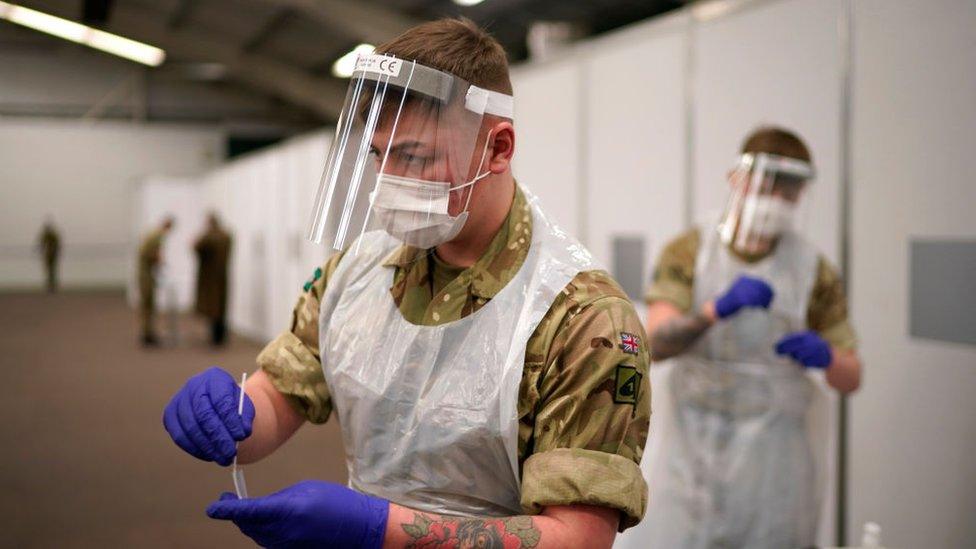Coronavirus: Rapid testing to expand beyond Liverpool this week
- Published
- comments

Soldiers have been carrying out Covid-19 testing in Liverpool
More than half a million 'rapid' coronavirus tests are being sent to public health authorities around England this week, to kick-start the expansion of mass-testing.
600,000 lateral flow tests will be sent around England and allocated locally to 66 directors of public health in England including areas such as Yorkshire, the North East, the West Midlands and the West Midlands.
It is hoped that by finding out who does and does not have the virus, and acting quickly, that the spread of the infection will be reduced.
Some people have warned they might not be as effective at detecting the virus in people who are in the early stage of the disease.
The tests will be offered to people who have had symptoms and those who haven't, but the government wants to test high-risk and priority groups on a weekly basis.
The public health director in Liverpool said there should be capacity to test 50,000 people per day
Mass testing in Liverpool
Last week, a similar mass-testing plan launched in Liverpool and the Mayor of Liverpool says more than 23,000 people have been tested since Friday 6 November.
The city has one of the highest infection rates in England and it was the first place to be put under tier three restrictions at the beginning of October.
The military sent 2,000 people to Liverpool to help carry out the testing at sites all over the city - in schools, universities, work places and care homes.
People have been offered one of two types of test - the swab test that's already available and a new way of testing called lateral flow.
A walk-in and drive-in mass Covid-19 testing site in the Liverpool
Health Secretary Matt Hancock said: "Last week we rolled out mass testing in Liverpool using new, rapid technology so we can detect this virus quicker than ever before, even in people who don't have symptoms.
"Mass testing is a vital tool to help us control this virus and get life more normal."
However, the government says people still need to follow lockdown rules and continue to wash their hands, wear face coverings and maintain social distancing.
On Monday, the Prime Minister said the city-wide testing would be rolled out, but he did not confirm which cities would be next
Local health leaders will decide how all the tests are allocated, but in the first week there will be enough to cover 10% of the population of the cities that receive them.
- Published5 November 2020
- Published6 April 2022
- Published5 November 2020
